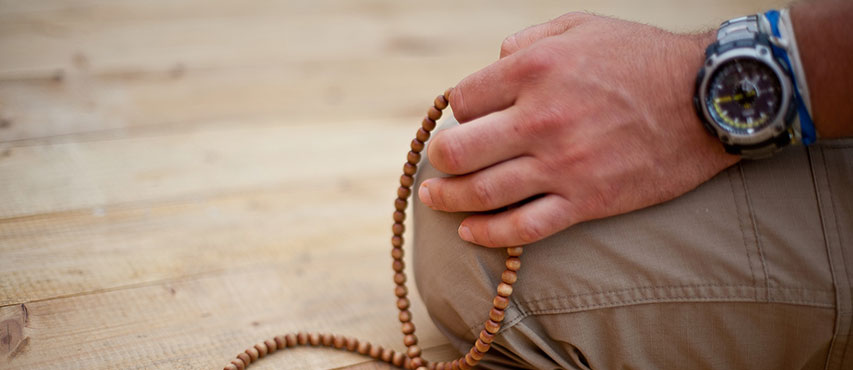Meditating in daily life

“Sit in meditation for 20 minutes every day — unless you’re too busy. Then you should sit for an hour.”
— Zen proverb
For best results, Buddhist teachers advise us to meditate regularly. Most of us already have busy schedules, so what strategies can we use to integrate daily meditation into our lives?
Integrating meditation into daily life
After trying the meditation on the 16th Karmapa in a Diamond Way Buddhist center, what next? If you like the general feeling of this main meditation and the people in the center, it means that probably Diamond Way meditation methods suit you. All of our centers offer the meditation on the 16th Karmapa at least once a week. And we can also use these methods at other times.
It makes sense to take refuge first thing in the morning – to open up to the goal of enlightenment, to the teachings that bring us there, our friends on the way, and our chosen teacher. Turning our mind towards lasting values, and strengthening the wish to be useful to others, sets an excellent frame for the day.
Having taken refuge, we can use brief moments throughout the day, when the boss has gone out or the children are sleeping, for informal meditation sessions. Performing a shortened version of the meditations on the teacher that we have already learned and practiced formally is a great way to step off the treadmill of our ordinary attitude.
And of course, including a formal meditation session at the beginning or end of each day (or whenever possible) ensures that we are growing not only older, but also wiser.
First of all, try to see everybody and everything on the highest possible level. Meditate when possible, even if only for a few minutes. Don’t judge your meditations, and enjoy the aware space behind and between the experiences. It is your buddha essence and the source of highest, timeless bliss.
— Lama Ole Nydahl, interview published in Buddhism Today, Issue 20
Can I just meditate at home?
After learning a meditation by getting the explanations and meditating it through with someone in the center, you can practice it home or anywhere, not only in a Buddhist center.
Most Diamond Way practitioners combine both — the comfort of meditating at home and the support of meditating in the Buddhist center with people doing the same meditations. In the Buddhist center, someone is always available to answer questions we might have about our meditation practice. This is especially useful if we decide that we want to take Diamond Way Buddhism as our path and start the Foundational Practices.
Being around the sangha (Buddhist practitioners) is a great way to strengthen friendships as well as our practice. Rich human exchange with friends who are traveling on the same way as us is a real gift and gives a helpful mirror to our own development.
Meditation courses
Meditation courses offer the chance to practice more intensively, or to learn new things. In Tibet, the Karmapas and other Kagyu masters would often travel from one place to another with hundreds of their students, meditating with them and giving teachings as they went. Traveling to meditation courses, near and far, whether small events with a handful of friends, or large international courses of several thousand people, is very common among Diamond Way Buddhists. It always brings an enriching exchange with the teacher and fellow practitioners.
Among many other possibilities, the annual Summer Course in the Europe Center always has a full program of meditation and teachings or empowerments by high lamas.
Meditation retreats
Apart from the many Diamond Way Buddhist centers in cities, there are also many beautiful retreat centers, usually in areas more remote from the unceasing buzz of the busy world. Short retreats are commonly used as an intensive period of meditation to push our daily practice forward. Longer retreats should only be undertaken after consulting one’s trusted lama.
Different retreat centers offer different conditions: some are in the remote countryside and others are close to towns; some can accommodate closed individual retreats and in others the retreatants all take part in the daily life of running the center. In the choice of retreat centers, as in many things, the best way is to ask the advice of one’s experienced friends in the Buddhist center.